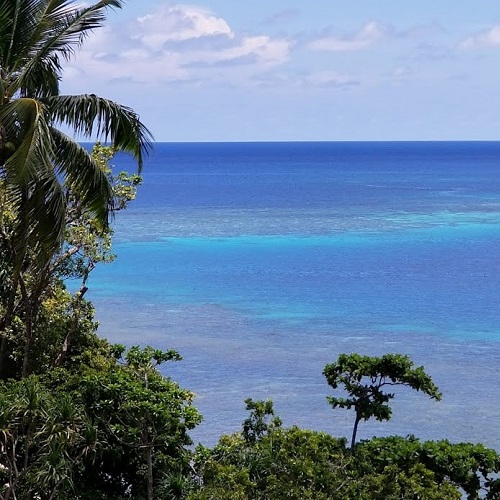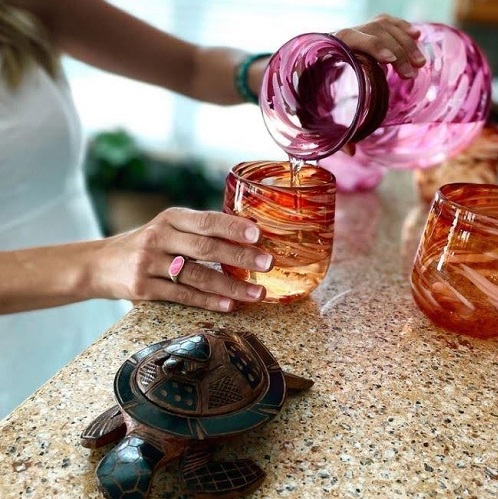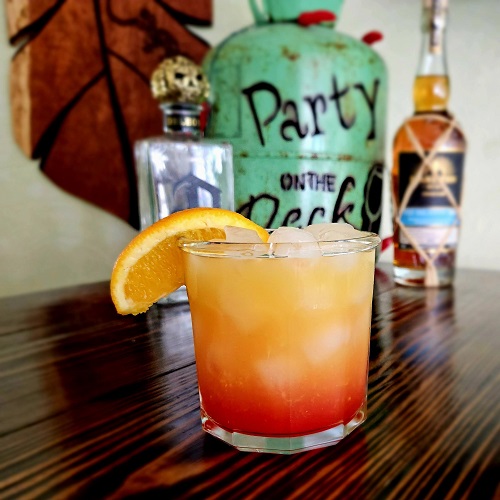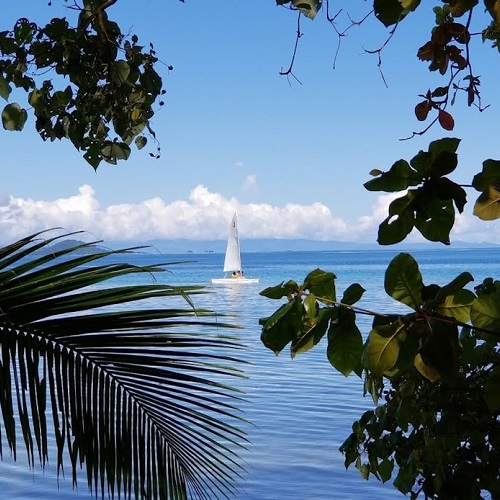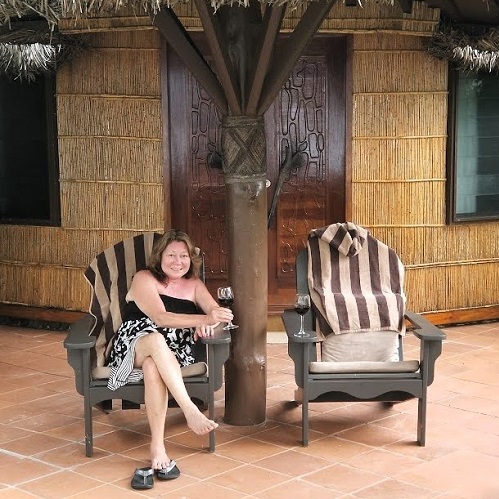
Awesome Sea Turtles and Deadly Warrior Clubs

Cannibal Forks From Fiji
A Guide to Kava Bowls: Origins, Styles, and Where To Get Them
Before boarding a plane to incredible destinations such as the South Pacific, one way you can make your trip so much more special is to spend a bit of time online prior to leaving to find out what makes your destination of choice the special one that it is. In addition to just checking out where you will be staying, see how it differs from its neighboring islands and countries in art and in culture.
Sometimes there are big differences such as in local languages, cultural practices, architectural designs and in local artwork. Knowing something about these differences can really make your trip so much more worth it if you know about them beforehand.
When it comes to the South Pacific, one of the most iconic cultural objects to know about is the wooden kava bowl which is called “tanoa”. Kava bowls have an important place in the history and lifestyle of Fiji as well as in other island nations such as Tonga and Samoa.
They are a centerpiece in ceremonies and in the ritual preparation and sharing of kava to drink. But these beautifully crafted bowls are not just serving bowls. Tanoas are used in ceremonies which honor the connections among the ceremony participants using traditions that also honor their ancestors.
In this guide, we will discuss the history, craftsmanship, the use of traditional techniques, and how kava bowls are used in modern-day home décor.


Photo Credits: Cerulean Bay
The Kava Plant
Kava or “piper methysticum” in Latin, is a pepper plant that originated from the “piper wichmannii” or “wild kava” plant. It is considered to be indigenous throughout the South Pacific and in Oceania. Today, it is grown in Samoa, Fiji, Micronesia, Vanuatu, and in Hawaii. Its active ingredient is kavalactone which is known to have sedating and anesthetic properties. It is a remedy for certain forms of anxiety and for depression.

Kava Root. Photo credit: Kalm With Kava
It is believed that kava originally came from Vanuatu or Papua New Guinea and later was grown further east across the Pacific. For thousands of years, voyagers in canoes set off from these locations in search of new settlements and brought kava plants with them wherever they travelled. Over time, the plant species evolved in new environments which is why different varieties across the Pacific have somewhat different flavors.
Forms Of Kava
Kava is available in several forms for consumption:
- Kava tea: Made by steeping ground kava root in water
- Kava capsules: In powdered form as an herbal supplement
- Kava tinctures: Liquid extracts
- Kava powder: To mix into drinks or smoothies
As a tea, it has different names depending on the region in the Pacific. In Fiji it is called ‘yaqona’ (pronounced ‘yang-Go-na’), or ‘grog’, In Samoa it is known as ‘ava’ and in Hawaii as ‘awa”. The drink is typically made from mixing water with the root of the pepper plant. It produces a mildly narcotic and relaxing effect.
Historically, the root was chewed and spit out by children or female virgins as this was thought to be the most effective way of releasing the kavalactones. Today, most kava is made from roots that are dried and ground up to form a powder which is then mixed with water in a tanoa. When made from fresh roots, these are crushed and pounded so that the liquid can be extracted from the pulp. This is then strained and poured into cups to drink.


Photo Credits: Cerulean Bay
What Is A Kava Bowl?
A kava bowl is a broad and deep wooden vessel in which kava powder and water are mixed together so it can be served to a group either as part of a traditional ceremony or for an informal gathering of friends and family.
While these bowls are commonly known as ‘tanoa’ in Fiji and in Samoa, they are called ‘kumete’ in Tonga, and ‘kanoa’ in Hawaii. Kava bowls are made of wood, often with beautiful carvings that tell a story and make it a unique work of art while the tea itself is served in a coconut shell which is filled and passed around. But these wooden bowls are more than just something in which to make a tea – they are centerpieces at momentous assemblies which symbolize harmony, they show respect for the spirits of ancestors, they promote unity during momentous occasions, and they provide a connection with the land.

Photo credit: Culture Cog
Although they are usually round in shape, kava bowls can also be elliptical and the number of legs on which they stand on can vary. In Fiji, kava bowls are carved to have four legs which in Samoa, some designs have as many as twelve legs. The design mostly depends on its region’s history and culture as well as artisan’s creativity. The craftsmanship reflects the cultural heritage of the people of the Pacific Islands. Exquisite designs often portray stories and symbols that people deeply resonate with.

Samoan Kava Bowl. Photo Credit: New Guinea Tribal Arts
Discover Tropical Home Décor Treasures
Bring island vibes into your home with exclusive artisan-made goods.
The History of The Kava Drinking Ritual
Kava ceremonies originated in the islands of the South Pacific, specifically Fiji, Tonga, Samoa, and Vanuatu, which have been and still are considered as the cultural hubs for kava drinking rituals. Over time, these ritual became a vital part of everyday life and social gatherings.
They are used to observe important occasions such as welcoming visitors, university graduations, weddings, blessing new homes, funerals, and in political debates.

Fiji Islands: Incantation of Yangona, or Kava Bowl c.1882. Photo Credit: MeisterDrucke
Kava Ceremony Etiquette
Today, kava bowls are used by friends and family to serve kava as they gather to relax and visit with each other. In Fiji, visitors to kava ceremonies are expected to dress modestly as Fiji has a more conservative approach about how to dress. Neither men nor women should show their knees. When wearing shorts, it is best to have a sulu with you (Fiji’s version of a sarong) so you can wrap it around yourself. Women should avoid short dresses and they should also not have exposed shoulders (a t-shirt takes care of that). Speaking of modesty ladies, no cleavage either. And no hats either for men or women.
Kava is served to ceremony participants in coconut half shell cups called ‘bilos’ in Fiji. Kava ceremonies are a bit different depending on the country but overall, the reasons for them and how the drink is made are very similar. Usually the chief of the village or community is the first to receive the cup. Then the next highest ranking person will take the cup and as it is refilled, the cup passes to everyone else depending on their status and position in the group.

Photo credit: SPREP.ORG
Participants sit cross-legged on the floor in front of the chief or head of the ceremony as he mixes the powdered kava root with water in the tanoa (kava bowl). The powdered kava root is strained through a cloth which is repeatedly soaked and squeezed. When the kava is ready, it is scooped into a coconut shell. We were asked if we wanted a “low tide” (half shell) or a “high tide” (full shell). We accepted the “high tide”.

Photo credit: Burman’s Health Shop
As the cup is passed and refilled, it will make its way to you. It really is considered an insult in Fiji if you refuse it. Kava is a bit intimidating to look at but as I always say when traveling, honest attempts to fit into the local culture are beyond appreciated by the locals and it takes you so much farther in life! Also when kava is made at your resort or during an organized tour to a local village (like we did), it is made with bottled water so it is totally safe to drink.
Just before taking the cup, clap once with cupped hands (not like when you are clapping to give applause, they were very specific about that!), take the bowl and just drink it down. Drink the whole earthy, slightly bitter, muddy-looking drink in one gulp (I didn’t mind the taste) and then say “Bula!” (boo-lah). Then you hand the cup back to the chief and clap 3 times again with cupped hands. Everyone will clap along with you.

Photo Credit: Cerulean Bay
So as you can see, drinking from this communal bowl really means something. It involves careful preparation and following strict serving protocols. By observing the correct etiquette, you are honoring the legacy of your hosts’ ancestors. A few points to be aware of when visiting Fiji:
- Dress modestly – Wear conservative clothing to show that you respect your hosts and their tradition.
- Present your host with a kava root or kava root powder – Both are found at local markets.
- Sit cross-legged in a circle around the bowl – The bowl is placed in front of the host.
- Wait for your turn – Guests are offered the drink in order of their rank.
- Clap once with cupped hands and accept the bowl – Clapping shows gratitude for the gift.
- Receive the cup with both hands – Politely bow slightly while doing so.
- Hold with both hands while drinking all in one sip. When finished, say “Bula!” – Sipping or pausing is considered impolite.
- Hand the cup back to the chief and clap 3 times again with cupped hands
- Never refuse to drink kava – Refusing to drink kava when offered is considered disrespectful.
A quick note about the word “Bula”: You will hear it all the time in Fiji. It is such a cool word and you will love hearing it! When someone says it to you, you say it right back. It is similar to “Aloha” in Hawaii and means much more than the simple “Hi!” we use here in the US. “Bula” is an all-inclusive word that is used to greet someone while wishing them a great day or great health at the same time. Sometimes they say it twice to you, “Bula Bula!” and it just means all that much more!
So kava’s cultural significance goes far beyond just being a regular drink in the South Pacific. It is truly a part of everyday life and is a very deep part of the South Pacific culture.

Photo Credit: Cerulean Bay
How Tanoas Are Made
Kava bowl designs range from the simple, unfinished look on one end to the most beautiful and intricately carved on the other. In Fiji, they are traditionally carved from a native hardwood called vesi wood and they feature various complex carvings, patterns, and images of marine and plant life. They are finished with beautiful stains and are polished to bring out the features of the wood and the carvings. Many of them also have accents made from shell and mother-of-pearl. The artistry is amazing!
Traditionally, kava bowls are hand carved. After picking the right piece of wood which has been allowed to dry for a period of time, artisans chisel and sand the wood to create a wide, deep bowl with flat rims. They will also carve the legs from the same block of wood.
Depending on the country and its local tradition, styles and the number of legs they have will vary. Although carving and finishing completely by hand is still common, some craftsmen do use power tools as needed as these speed up the manufacturing process.
Authentic hand carved kava bowls will have smooth finishes and intricate carvings and etchings. But they also might appear to be a bit uneven and they will have imperfections in the wood, in the carved designs, and in the finishes. As they are hand carved, no two will ever be perfectly alike. So when looking quality pieces, these features are normal and mean you are getting a truly authentic piece of the South Pacific.

Photo Credit: Cerulean Bay
Materials: Traditional & Modern Alternatives
Historically in Fiji, most kava bowls were made from a local hardwood with the scientific name “Intsia bijuga”. Commonly known as ‘Borneo teak’ and locally known as ‘vesi’, this is the primary wood used today. It is durable, termite-resistant, and can withstand continuous use for prolonged periods of time. It is also sustainably grown and is a renewable resource.
These characteristics make this wood ideal for crafting communal bowls. Other types of woods include coconut wood, cordia subcordata (‘Beach cordia’, ‘Kou’), and other modern wood alternatives. But you must take care when considering these woods because they are not as dense and are more prone to warping and cracking over time if they are not properly cared for.
Different Styles of Kava Bowls
Every Pacific island country has its variation of tanoa but its symbolism and cultural significance remain the same among them. Although they can vary in shape and size, they have several features in common – they are all made of wood, they have a large bowl to hold liquid, and they have four or more legs. Below are the most common types. Bowls use for making kava are completed with unfinished wood meaning no polishes or stains are used. They may or may not feature local or tribal carving designs. Bowls which are for decorative use will have more elaborate carvings and will be finished with one or more polishes and wood stain colors.
Fijian Tanoa
Fiji has a large range of sizes for this vessel as they are made for a number of different social purposes and functions. Historically, its use was restricted to chiefs and priests who used it for ceremonial rituals. Some of the oldest variations were manufactured from clay and stone. Today they are all made from local Fijian wood species. They usually have four legs and can be embellished with shells and coconut husk cords.

Samoan Kava Bowls
Also referred to as ‘ava’ bowls, these serving vessels have a large number of legs. In fact, they can have more than ten legs and the bowl can be either round or oval shaped. They might also feature delicate detailing on the rims or legs.
Tongan Kava Bowls
Ceremonial bowls from Tonga tend to be larger and more simple in style, thus emphasizing function over decoration. They are usually made of local hardwood called ‘fehi’.
Kava Bowls In Home Décor
Apart from their use in rituals and in family gatherings, kava bowls can also be used as statement pieces in
Simple designs which highlight the natural wood grain make fantastic centerpieces and art displays in

Or they can be displayed flat:

Photo Credits: Cerulean Bay
Care and maintenance are fairly simple – keep them out of direct sunlight, dust them regularly, and lightly polish with a bit wood oil periodically.
Styling tips:
- Choose a space where you can have your tanoa standout such as on a coffee table in your living room
- Display one on a console table against a wall decorated in tropical style

Photo Credit: Cerulean Bay
- Include indoor tropical houseplants as hard carved wood pieces go very well with plants to create authentic
tropical displays - Consider the size and color to determine where your kava bowl will be the most striking
- Learn about the heritage behind the piece so you can share that information during social gatherings with family and friends
- You can also use small kava bowls as part of gallery wall

Photo Credit: Cerulean Bay
Buying Kava Bowls – Things To Look For
When shopping for tanoa to be used as decorative pieces, there are several thing to take into consideration:
- Purpose – Think of how the item will be used. Will you use your tanoa only as décor item or will it have a specific purpose (to hold objects)? Decorative bowls made either of softer or harder types of wood are not to be used for kava preparation as they are not safe due to their polishes and stainings. Traditional bowls are made from native hardwoods and they are left unfinished. This makes them safe to use for drinking kava.
- Authenticity – If you are looking for an original piece, choose hand carved items made by the local artisans in the Pacific islands. Only they have the remarkable craftsmanship skills and cultural background which are needed to create these pieces. Authentic pieces will also have slight imperfections that add character and personality.
- Quality – Purchase high-quality bowls so that you can enjoy them for a life time. Vesi hardwood will last the longest when properly cared for.
- Ethical sourcing – Support sustainable practices in manufacturing. Buying from artists who follow these practices ensures you honor not only their history but also the environment.
Where to Buy Fijian Kava Bowls
Bring a touch of
The bowls are perfect for tropical style living rooms and tropical bedrooms.
NOTE: These products are for decorative purposes only. Do not use for food or drink.
Fijian Tanoa Kava Bowl with Sea Turtles Edge
Two-toned hand-carved kava bowl with sea turtle images engraved on a dark brown carved border. For decorative use only.
- Color: Medium and dark brown
- Size: 7” – 16″
- Handmade: Yes
- Country of origin: Fiji
Fijian Tanoa Kava Bowl with Sea Turtle and Hibiscus Flower
This decorative handmade bowl features turtle and hibiscus flower carvings and edging with shell accents.
- Color: Multicolor (brown, black, white)
- Size: 6” to 20”
- Handmade: Yes
- Country of origin: Fiji
Commonly Asked Questions
1. Can I use my decorative bowl to prepare kava?
No, the bowls we currently carry are finished with various wood stains and polishes which are not food grade. Ours are decorative bowls for display purposes only. If you would like bowls to prepare kava, we are currently sourcing those and will carry them in the near future.
2. How do I care for my tanoa bowl?
Caring for these bowls is simple. Keep them out of direct sunlight. Dust them regularly and occasionally apply a little wood oil very lightly to maintain their natural beauty.
3. How do I know if tanoa is authentic or not?
Authentic kava bowls will have imperfections as they are carved and finished by hand. Each one will be different from the next. You will feel areas of differing texture, the designs patterns might have a few irregularities, and they might not sit completely level. Sometimes they might rock a bit back and forth as the legs are not all exactly the same in measurement. If your bowl is too uniform and looks perfect from all angles, it is most likely completely machine-made from China or another Asian country. Hand carved pieces of art from the South Pacific are not perfect in size, texture, balance, or appearance.
4. What do kava bowls symbolize today?
Today, kava bowls symbolize peace, tranquility, and friendship. With kava bars now opening around the world, the pleasure of drinking kava is spreading globally. This is a testament to the historical traditions which involve kava and to the cultures in which kava has been a part of daily life for centuries.
You May Also Be Interested In:
- 8 Easy to Grow Indoor Tropical Plants: Planting Guide & Styling Tips
- 10 Tropical Bedroom Design Ideas & Practical Advice
- Tropical Wall Décor Ideas: Infuse Your Living Space With Tropical Vibes
- Create Your Dream Escape: 20 Tropical Backyard Ideas
- Tropical Outdoor Living Room & Patio Ideas: A Guide to Creating an Exotic Oasis at Home
- 10 Top Picks for Outdoor Tropical Plants: Easy-Care Options for a Vibrant Oasis








